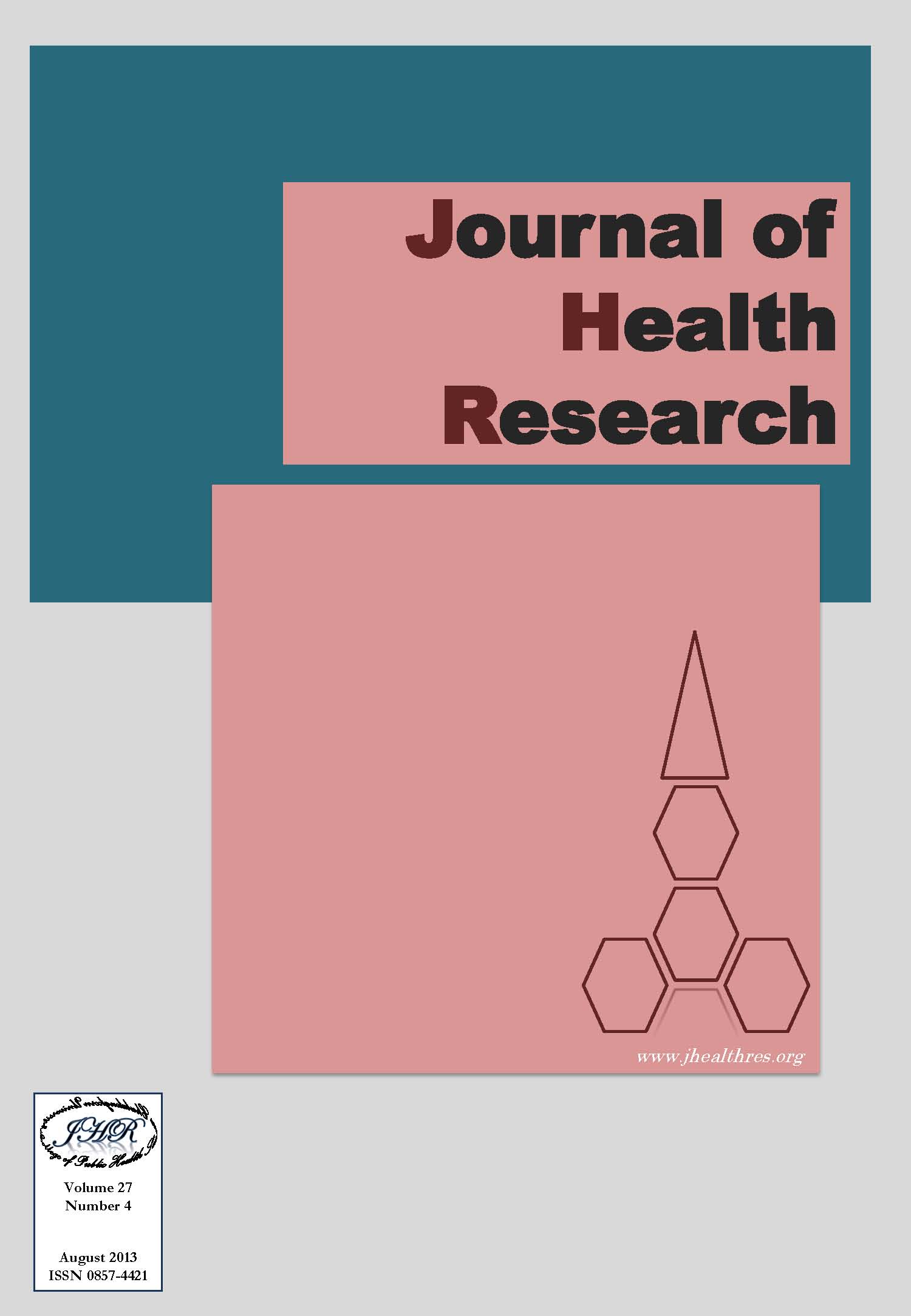Risk Assessment of Heavy Metal Associated with Dermal Exposure in Incense Workers in Small Household Factories at Roi-Et Province, Thailand
Keywords:
Heavy metal, Dermal exposure, Risk assessment, Incense workersAbstract
The Ngooleum village in Roi-Et province is one of the largest producers of incense sticks in the northeastern region of Thailand. Heavy metals are present in the dyes used to color the incense sticks, and there is concern regading potential dermal exposure to these metals. The aim of this study was to assess the potential risk that such heavy metal exposure generates. Thirty-five small household factories were randomly selected for sample collection and one worker in each factory was interviewed face-to-face about factors potentially related to exposure. Heavy metals residue in each sample was extracted by microwave digestion, and analyzed by inductively coupled plasma optical emission spectrometry (ICP-OES). The average residue concentrations (±SD) of Ba, Cd, Cr, Mn, Ni, and Pb on workers’ hands were 11.03±2.31 mg/kg, 1.13±0.23 mg/kg, 2.77±0.83 mg/kg, 7.06±1.92 mg/kg, 8.20±2.22 mg/kg, and 3.55±1.32 mg/kg, respectively. The calculated dermal absorbed dose (DAD) of male workers (n=5) on six heavy metals exposure were 2.77×10-7 mg/kg-day, 2.64×10-9 mg/kg-day, 7.38×10-8 mg/kg-day, 1.71×10-7 mg/kg-day, 1.89×10-7 mg/kg-day, and 8.98×10-8 mg/kg-day, respectively. The hazard quotients (HQs) of six heavy metals were 5.64×10-5, 2.20×10-4, 4.92×10-3, 2.85×10-4,9.46×10-4, and 2.14×10-4, respectively. The hazard index (HI) for total six heavy metals was 6.64×10-3. The (DAD) of female workers (n=30) for six heavy metals were 2.58×10-7 mg/kg-day, 2.68×10-9 mg/kg-day, 6.39×10-8 mg/kg-day, 1.66×10-7 mg/kg-day,1.95×10-7 mg/kg-day, and 8.28×10-8 mg/kg-day, respectively. The risk characterizations in term of hazard quotient (HQ) of these metals exposure for female workers were 5.26×10-5, 2.24×10-4, 4.26×10-3, 2.77×10-4,9.74×10-4, and 1.97×10-4, respectively. The hazard index (HI) of total six heavy metals was 5.99×10-3. In conclusion, both of the HQ values for each heavy metal and HI value for total six heavy metals were considerably less than one. Thus, it is concluded that these incense workers may not be receiving appreciable health risk from dermal occupational exposure to these heavy metals.






